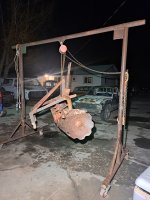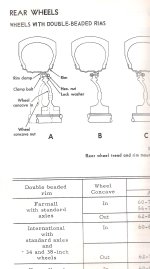FinallyFarming
Member
706
The rear wheels were previously removed and flipped backwards to make it narrower for storage.
Now I need to flip them back the normal way for stability.
I know HOW to do it, but I need a WAY to do it.
Anyone know a safe way to do this without a fork lift or another tractor?
Thanks
The rear wheels were previously removed and flipped backwards to make it narrower for storage.
Now I need to flip them back the normal way for stability.
I know HOW to do it, but I need a WAY to do it.
Anyone know a safe way to do this without a fork lift or another tractor?
Thanks





